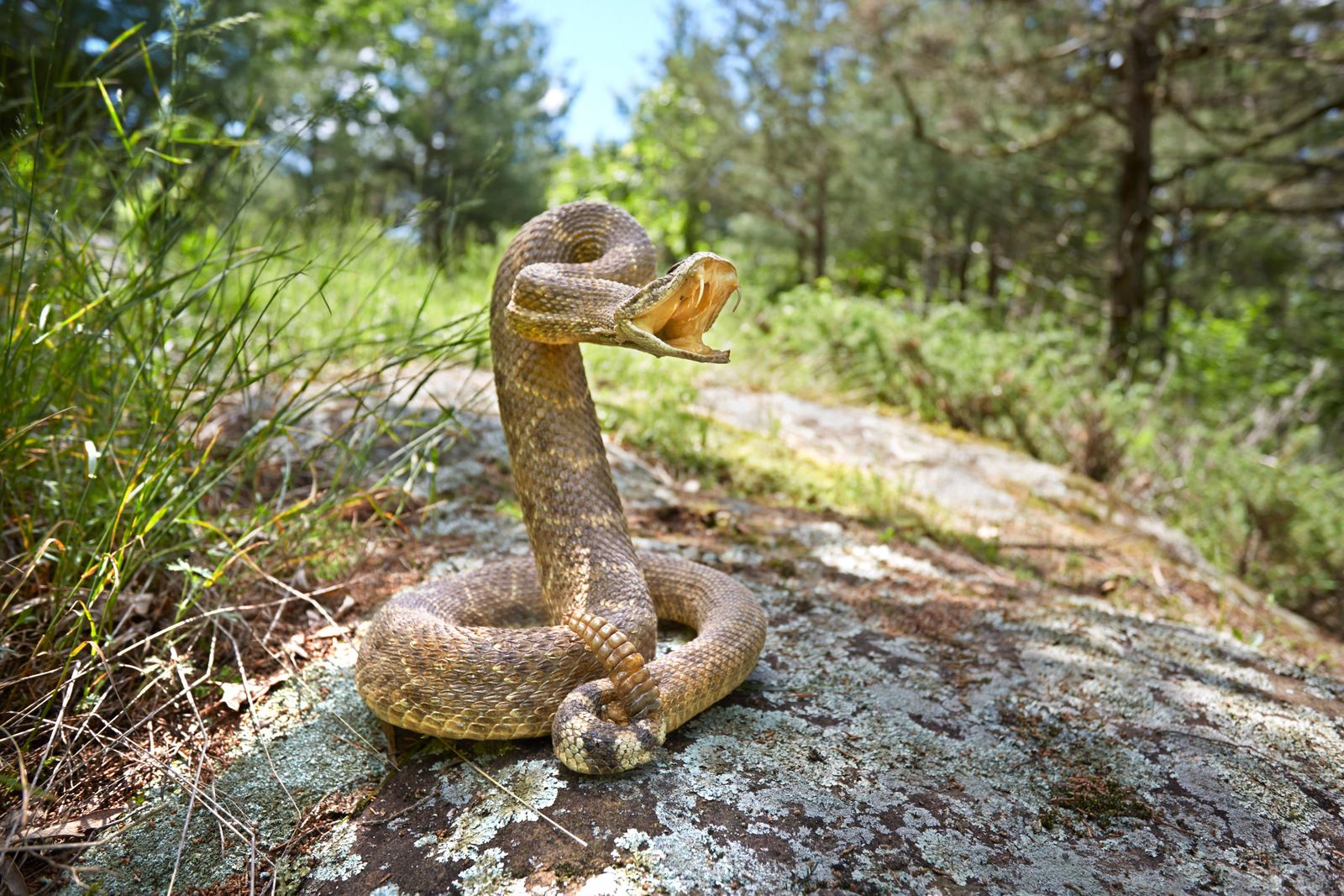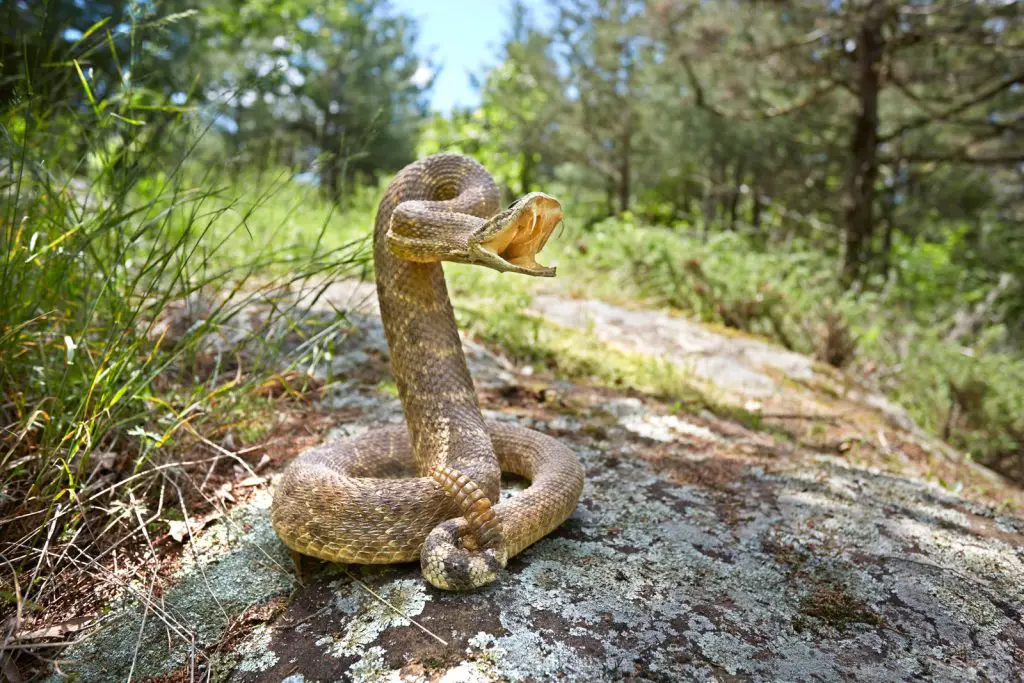Rattlesnakes are one of the most feared and misunderstood creatures in the animal kingdom. Their reputation as venomous and dangerous predators has made them a subject of fascination for many. But are they really as dangerous as we think? In this article, we will explore the truth behind rattlesnakes and their potential threat to humans.
Whether you live in an area with a high population of rattlesnakes or simply have a fear of encountering one, it’s important to understand the facts. While it’s true that rattlesnakes are venomous, their danger level depends on a variety of factors. Join us as we delve into the world of rattlesnakes and uncover the truth about their potential threat to humans.
Rattlesnakes are highly venomous and can be very dangerous if provoked or threatened. Their bites can cause severe pain, swelling, and even death if left untreated. It is important to give rattlesnakes a wide berth and never attempt to handle or approach them. If you encounter a rattlesnake, calmly and slowly move away from it.

Is Rattlesnake Dangerous?
Rattlesnakes are a type of venomous snake that can be found in various parts of the world. They are known for their distinctive rattle on the end of their tails, which they use to warn predators and humans of their presence. But, is this snake really dangerous?
Identification of Rattlesnakes
Rattlesnakes are easily identifiable by their rattle, which is made up of interlocking segments of keratin. They also have triangular-shaped heads and heat-sensing pits located between their eyes and nostrils. Most rattlesnakes have a pattern of diamond-shaped markings on their skin, although some species may have stripes or other markings.
Rattlesnakes are found in a variety of habitats, including deserts, forests, and grasslands. They are most active during the day in cooler months, but during the summer, they tend to be more active at night.
Types of Rattlesnakes
There are several different species of rattlesnakes, each with its own unique characteristics. Some of the most common species include the western diamondback rattlesnake, the eastern diamondback rattlesnake, and the timber rattlesnake.
The western diamondback rattlesnake is found in the southwestern United States and northern Mexico. It is the largest rattlesnake species and can grow up to 7 feet in length. The eastern diamondback rattlesnake is found in the southeastern United States and is the heaviest venomous snake in North America. The timber rattlesnake is found in the eastern United States and is known for its distinctive black and brown markings.
Rattlesnake Venom
Rattlesnakes are venomous, and their venom can be dangerous to humans. The venom is a complex mixture of proteins and enzymes that can cause a variety of symptoms, including pain, swelling, and tissue damage. In some cases, the venom can also cause life-threatening complications, such as respiratory failure and organ damage.
Despite their venomous nature, rattlesnakes do not always inject venom when they bite. This is because venom is a valuable resource for the snake and is only used as a last resort for self-defense and hunting.
Rattlesnake Bites
If you are bitten by a rattlesnake, it is important to seek medical attention immediately. The severity of the bite will depend on a variety of factors, including the species of snake, the size of the snake, and the amount of venom injected.
Symptoms of a rattlesnake bite may include pain and swelling at the site of the bite, nausea and vomiting, dizziness, and difficulty breathing. In severe cases, the bite can cause paralysis, shock, and even death.
Prevention and Treatment
The best way to avoid a rattlesnake bite is to stay away from areas where they are known to live. If you do encounter a rattlesnake, give it plenty of space and do not try to handle it.
If you are bitten by a rattlesnake, the first step is to get away from the snake and call for help. Keep the affected limb immobilized and at or below heart level to slow the spread of venom. Do not apply a tourniquet, cut the wound, or try to suck out the venom.
Treatment for rattlesnake bites typically involves antivenom medication, which is designed to neutralize the snake’s venom. Other treatments may include pain medication, intravenous fluids, and wound care.
Benefits of Rattlesnakes
Despite their reputation as dangerous creatures, rattlesnakes play an important role in their ecosystems. They are apex predators and help to control populations of rodents and other small animals. Rattlesnake venom is also being studied for its potential medical benefits, including its use in cancer treatment and pain management.
Rattlesnakes vs. other Snakes
Rattlesnakes are often compared to other types of snakes, such as non-venomous snakes and other venomous snakes. While all snakes have some level of danger associated with them, rattlesnakes are generally considered to be more dangerous due to their venomous nature and aggressive behavior.
Non-venomous snakes, such as garter snakes and king snakes, are not dangerous to humans and can be beneficial in controlling pest populations. Other venomous snakes, such as copperheads and coral snakes, are also dangerous but do not have the same level of notoriety as rattlesnakes.
In Conclusion
In conclusion, rattlesnakes are dangerous creatures that should be avoided whenever possible. If you do encounter a rattlesnake, give it plenty of space and do not attempt to handle it. If you are bitten, seek medical attention immediately and follow the recommended treatment plan. Despite their danger, rattlesnakes play an important role in their ecosystems and may even have potential medical benefits.
Frequently Asked Questions
Here are some common questions people ask about rattlesnakes:
What should I do if I encounter a rattlesnake?
If you come across a rattlesnake, the best thing to do is to give it plenty of space. Rattlesnakes are not aggressive and will generally only strike if they feel threatened. If you see a snake, move away slowly and keep your distance. If you are hiking, stay on designated trails and avoid stepping over rocks or logs where snakes may be hiding.
If you are bitten by a rattlesnake, seek medical attention immediately. Do not try to suck out the venom or use a tourniquet, as these can do more harm than good.
What are the symptoms of a rattlesnake bite?
The symptoms of a rattlesnake bite can vary depending on the type of snake and the amount of venom injected. Common symptoms include pain, swelling, and discoloration around the bite area, as well as nausea, vomiting, and dizziness. In severe cases, a rattlesnake bite can lead to difficulty breathing, paralysis, and even death.
If you are bitten by a rattlesnake, seek medical attention immediately. Do not wait for symptoms to appear, as the venom can cause serious damage to your body in a short amount of time.
How can I protect myself from rattlesnake bites?
The best way to protect yourself from rattlesnake bites is to be aware of your surroundings. If you are hiking or camping in an area known to have rattlesnakes, wear long pants and boots to protect your legs and feet. Use a flashlight at night to see where you are stepping, and avoid walking through tall grass or over rocks or logs where snakes may be hiding.
If you encounter a rattlesnake, give it plenty of space and do not try to handle or capture it. Keep your pets on a leash and away from snakes, as they may provoke the snake and get bitten.
Are all rattlesnakes venomous?
No, not all rattlesnakes are venomous. There are 36 species of rattlesnakes, and only about half of them are considered to be dangerous to humans. However, it can be difficult to tell the difference between venomous and non-venomous snakes, so it is best to treat all rattlesnakes with caution.
If you are unsure whether a snake is venomous or not, it is best to give it plenty of space and avoid handling it.
What should I do if I find a rattlesnake in my yard?
If you find a rattlesnake in your yard, the best thing to do is to call a professional wildlife removal service. Do not try to handle or capture the snake yourself, as this can be dangerous and may result in a bite.
It is also a good idea to make your yard less attractive to snakes by removing piles of debris, sealing up any holes or gaps in your home’s foundation, and keeping your lawn mowed and free of tall grass and weeds.
The Most Venomous Rattlesnake in the World!
In conclusion, it is clear that rattlesnakes are dangerous creatures that should be treated with caution. While they play an important role in the ecosystem, their venomous bites can cause serious harm or even death to humans and animals alike. It is important to be aware of their presence and take necessary precautions when hiking or camping in areas where they are known to live.
However, it is also important to note that not all encounters with rattlesnakes result in harm. Many times, these creatures will try to avoid humans and only attack when they feel threatened. By keeping a safe distance and respecting their space, it is possible to coexist with rattlesnakes and appreciate their role in the natural world.
Ultimately, the question of whether rattlesnakes are dangerous depends on the situation and context. While they should be treated with respect and caution, it is also possible to appreciate their unique beauty and importance in the ecosystem. By understanding and respecting these creatures, we can ensure a safer and more harmonious relationship with them in the future.

